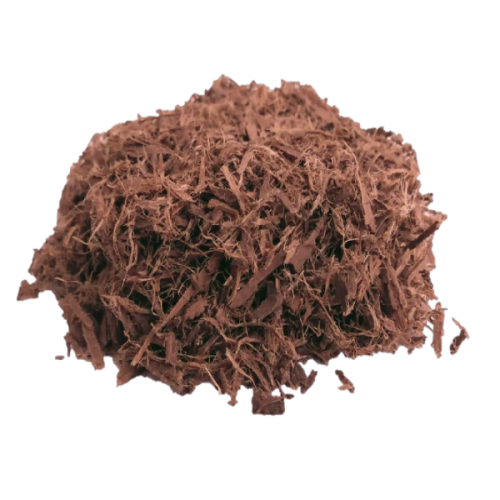Mimosa Hostilis Root Bark holds a big location in standard procedures and modern botanical apps. This article explores the attributes, origins, and common questions surrounding this outstanding plant substance, with a specific target the prized Brazillian Mimosa Hostilis Root Barks.
What exactly is Mimosa Hostilis Root Bark?
Mimosa Hostilis, scientifically generally known as Mimosa tenuiflora, is often a perennial tree native on the northeastern region of Brazil and areas of Mexico. The basis bark of this tree continues to be made use of for centuries by indigenous communities for different realistic and traditional purposes. The inner root bark consists of notable concentrations of tannins, alkaloids, and other phytochemicals that contribute to its unique Attributes and purposes.
The tree by itself is remarkably resilient, capable of surviving in lousy soils and drought circumstances. This hardiness contributes towards the sturdy mother nature of your bark and its chemical profile. When harvested sustainably, the outer root bark is thoroughly separated to obtain the valuable interior bark, which is then dried and ready for use.
Brazilian Mimosa Hostilis Root Bark: The Gold Typical
When discussing high-quality in Mimosa Hostilis products, the Brazillian Mimosa Hostilis Root Barks are usually regarded excellent in the botanical market. A number of things lead to this name:
Best Growing Situations
The precise soil composition, local weather, and ecosystem of Brazil's northeastern location build great disorders for Mimosa tenuiflora to establish its total chemical opportunity. The mineral-loaded soils and specific pattern of rainfall and daylight in this spot look to improve the focus of Energetic compounds in the root bark.Common Harvesting Information
In locations where Mimosa Hostilis has actually been utilised ordinarily, harvesters have developed advanced procedures for sustainable harvesting that preserves each the tree plus the potency in the bark. This know-how, handed down through generations, ensures that the bark is gathered at the ideal time of yr and processed working with techniques that maintain its integrity.Unique Bodily Properties
Brazilian Mimosa Hostilis Root Bark typically shows a wealthy reddish-brown to purple inner bark using a fibrous, dense texture. The visual traits generally serve as an Original indicator of high-quality, with expert people recognizing the distinct appearance of bark from this area.
Prevalent Programs and Takes advantage of
The applications of Mimosa Hostilis Root Bark span the two conventional and modern-day contexts, although It is really very important to know the legal standing of those takes advantage of may differ by region and jurisdiction.
Conventional Craft and Exercise
Indigenous communities have historically made use of Mimosa Hostilis Root Bark for creating organic dyes for textiles, With all the bark producing lovely shades of purple, burgundy, and deep brown. The tannin-loaded Homes also built it worthwhile for leather-based tanning together with other simple applications.Present day Botanical Study
Contemporary fascination in Mimosa Hostilis Root Bark extends to various fields of botanical investigation, especially learning its chemical composition and opportunity applications. Scientists have discovered several interesting compounds in the bark that warrant further more scientific investigation.Horticultural and Agricultural Takes advantage of
In permaculture and sustainable agriculture, Mimosa tenuiflora is valued for a nitrogen-fixing species that may increase soil high quality. The bark alone, when processed, may be used being a all-natural mulch or soil Modification in certain agricultural contexts.Good quality Evaluation and Identification

For people dealing with Mimosa Hostilis Root Bark, being familiar with how you can assess good quality is crucial. Substantial-high-quality substance, significantly genuine Brazillian Mimosa Hostilis Root Barks, commonly reveals certain qualities:
The Visible look ought to demonstrate a transparent distinction involving the outer and internal bark, Along with the inner bark exhibiting deep, lively hues. The fabric must have a attribute earthy, marginally sweet aroma, cost-free from musty or moldy notes. When processed, the bark really should generate a fantastic powder although sustaining its fibrous composition until finally grinding. Properly dried bark must be brittle but not dusty, indicating right moisture material.
Usually Requested Inquiries (FAQs)
one. What is the distinction between Mimosa Hostilis Root Bark from Brazil and also other regions?
Brazilian Mimosa Hostilis Root Bark is normally viewed as outstanding as a result of best rising circumstances in northeastern Brazil, which end in higher concentrations of Energetic compounds. The traditional harvesting procedures made use of in this location also contribute to the general good quality and potency of the final Mimosa Hostilis Root Bark solution.two. How should I shop Mimosa Hostilis Root Bark to take care of its high-quality?
Retail outlet the bark within a neat, dark, and dry put within an airtight container. Security from gentle, moisture, and Serious temperature fluctuations will help protect the bark's chemical integrity and forestall degradation of its Energetic parts.three. Is Mimosa Hostilis an endangered species?
No, Mimosa tenuiflora will not be now stated being an endangered species. In reality, it's noted for its resilient development and ability to thrive in complicated conditions. Nevertheless, liable harvesting techniques remain essential to make sure the sustainability of wild populations.4. Can I mature Mimosa Hostilis beyond its native habitat?
Whilst Mimosa tenuiflora thrives ideal in its indigenous tropical local climate, it may be cultivated in identical environments. The tree needs very well-drained soil, an abundance of daylight, and protection from frost. Nonetheless, the chemical profile of cultivated specimens may perhaps vary from wild-harvested Brazilian product.5. What is the authorized status of Mimosa Hostilis Root Bark?
The lawful status varies noticeably by nation and jurisdiction. In a few areas, the Uncooked bark is legal to possess, even though in Other individuals, unique extracts or preparations may very well be controlled. Usually analysis and adjust to nearby laws and polices ahead of getting or utilizing any botanical material.Being familiar with Mimosa Hostilis Root Bark, especially the top quality Brazillian Mimosa Hostilis Root Barks, demands appreciation of its botanical characteristics, common context, and acceptable applications. No matter whether for exploration, craftsmanship, or botanical research, this extraordinary plant materials carries on for being a subject matter of fascination across several fields, however usually inside correct legal and moral boundaries.